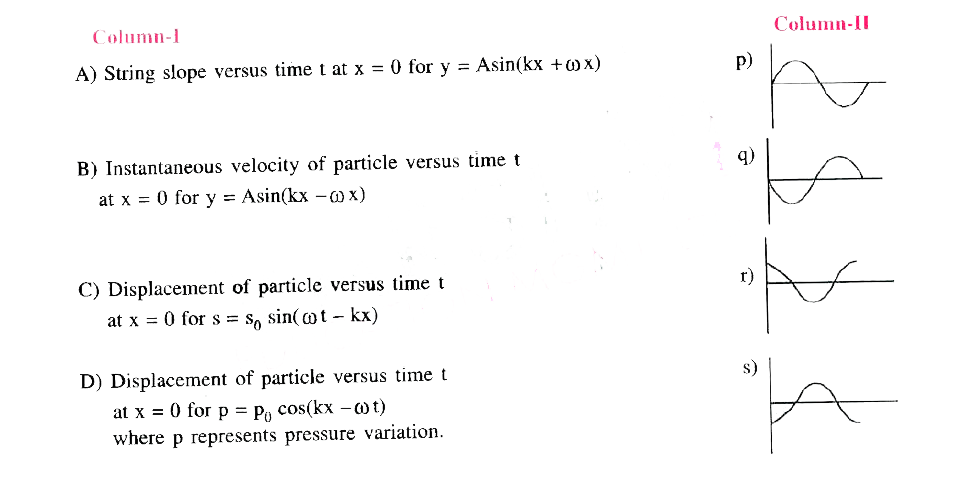The Kirchhoff's first law and second law , where the symbols have their usual meanings, are respectively based on
Conservation of charge, conservation of momentum.
Conservation of energy, conservation of charge
Conservation of momentum, conservation of charge
Conservation of charge, conservation of energy
To solve the question regarding Kirchhoff's laws, we need to understand the fundamental principles behind each law.
1. Understanding Kirchhoff's First Law:
- Kirchhoff's first law states that the sum of currents entering a junction must equal the sum of currents leaving the junction. Mathematically, this is represented as ΣI=0.
- This law is based on the conservation of charge. It implies that charge cannot accumulate at a junction; whatever charge flows into the junction must flow out.
2. Understanding Kirchhoff's Second Law:
- Kirchhoff's second law states that the sum of the potential differences (voltage) around any closed loop in a circuit must equal zero. This can be expressed as ΣIR=ΣE, where IR represents the voltage drops across resistors and E represents the electromotive forces (emf) in the loop.
- This law is based on the conservation of energy. It indicates that the total energy supplied in the circuit is equal to the total energy used (or dissipated) in the circuit.
3. Conclusion:
- Therefore, Kirchhoff's first law is based on the conservation of charge, and Kirchhoff's second law is based on the conservation of energy.
Final Answer:
- Kirchhoff's first law is based on conservation of charge.
- Kirchhoff's second law is based on conservation of energy.
- Kirchhoff's first law states that the sum of currents entering a junction must equal the sum of currents leaving the junction. Mathematically, this is represented as ΣI=0.
- This law is based on the conservation of charge. It implies that charge cannot accumulate at a junction; whatever charge flows into the junction must flow out.
- Kirchhoff's second law states that the sum of the potential differences (voltage) around any closed loop in a circuit must equal zero. This can be expressed as ΣIR=ΣE, where IR represents the voltage drops across resistors and E represents the electromotive forces (emf) in the loop.
- This law is based on the conservation of energy. It indicates that the total energy supplied in the circuit is equal to the total energy used (or dissipated) in the circuit.
- Therefore, Kirchhoff's first law is based on the conservation of charge, and Kirchhoff's second law is based on the conservation of energy.
- Kirchhoff's first law is based on conservation of charge.
- Kirchhoff's second law is based on conservation of energy.
Topper's Solved these Questions
- BOOK - VMC MODULES ENGLISHCHAPTER - DC CIRCUITEXERCISE - JEE ADVANCED ARCHIVE68videos
DC CIRCUIT
- BOOK - VMC MODULES ENGLISHCHAPTER - DC CIRCUITEXERCISE - LEVEL-2 DAILY TUTORIAL SHEET-510videos
DC CIRCUIT
- BOOK - VMC MODULES ENGLISHCHAPTER - CURRENT ELECTRICITYEXERCISE - IN-CHAPTER EXERCISE-F10videos
CURRENT ELECTRICITY
- BOOK - VMC MODULES ENGLISHCHAPTER - DYNAMICS OF A PARTICLEEXERCISE - JEE Advance (Archive) Level - II (SINGLE OPTION CORRECT TYPE )31videos
DYNAMICS OF A PARTICLE
Similar Questions
Dimensions of 1μ0∈0 , where symbols have their usual meaning are
View SolutionBohr magnetonis given by (symbols have their usual meanings)
View SolutionDerive R = 2f for a spherical mirror, where the symbols have their usual meaning
View SolutionSymbols have their usual meanings. Match the Column-I with Column-II:
 View Solution
View SolutionGiven →F=→at where symbols have their usual meaning. The dimensions of a is .
View SolutionThe dimension of e2/ε0hc (here symbols have their usual meanings) are
View Solutionthe correct form of Strokes law is (symbols have their usual meanings)
View SolutionSelect the incorrect relation. (Where symboles have their usual meanings):-
View SolutionDimension of 1μ0ε0, where symbols have usual meaning, are
View SolutionIf H=1√3V, then find angle of dip. (where symbols have their usual meaning)
View Solution

